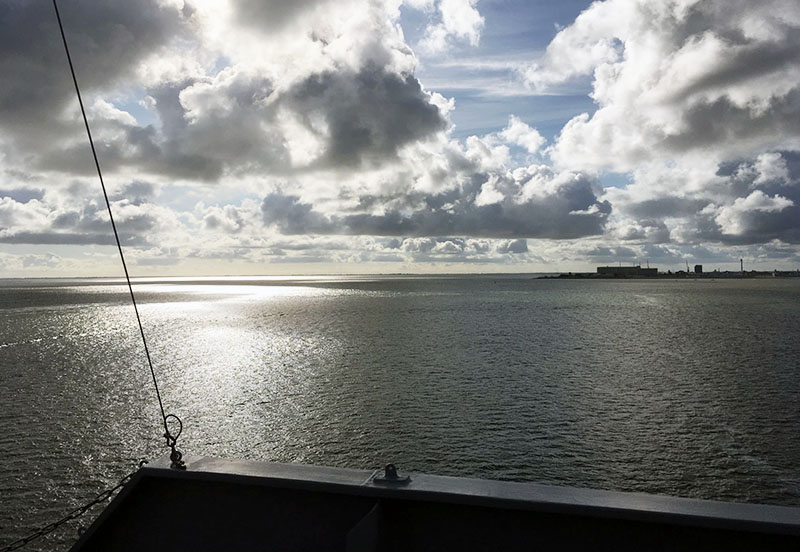A recent case in the port of Amsterdam has clearly demonstrated the challenges that stowaways pose for shipowners, their P&I Clubs, and local authorities.
A vessel departed from a well-known port in Ghana. A stowaway, who had disguised himself as a stevedore, managed to remain hidden on board. It was only several days after the vessel departed that the crew discovered his presence. The vessel was already en route to Amsterdam, its next port of call.
The vessel’s P&I Club appointed NNPC Correspondents to assist the owners of subject vessel.
Our aim was to ensure that the stowaway’s disembarkation was arranged smoothly and without unnecessary delay to the vessel.
We have contacted Dutch immigration authorities, who have a clear role in stowaway cases.
Early communication with the Dutch immigration authorities was crucial. Prior to the vessel’s arrival, the necessary arrangements were made. Immigration officers boarded the vessel immediately upon berthing in Amsterdam. All available documentation was submitted well in advance.
The stowaway, who had no official identification, was interviewed. On that occasion he applied for political asylum in the Netherlands. Article 18 of the Charter of Fundamental Rights of the European Union clearly states that any person entering EU territory has the right to apply for political asylum. The stowaway was promptly removed from the vessel, ensuring that no operational disruption for the vessel would be the result of the presence of a stowaway on board.
Stowaways cause challenges to masters, crews and shipowners
Stowaway cases are complex for several reasons.
Security and safety risks are a serious concern. Stowaways often board a vessel without the crew’s knowledge. This poses both a security and humanitarian challenge for various persons and parties involved.
Only few stowaways carry identification documents. The absence of proper documents inevitably complicates the process of establishing nationality and identity, making repatriation difficult.
It is vital to follow the legal and administrative procedures. The local P&I Correspondent knows the local rules and regulations, and he knows the authorities to be contacted in a stowaway case.
It is important to consider the costs and liabilities. It is clear that repatriation, detention and legal expenses can result in significant costs for shipowners and their P&I Clubs. However, the main issue is to get stowaways disembarked from vessels.
Recommendations to shipowners and masters 
The following preventive measures must be taken to reduce the risk and to mitigate the consequences of stowaways boarding a vessel:
- Strict access control whilst the vessel is in port. Only authorised personnel must be allowed to attend the vessel. Stevedores, suppliers and visitors must be checked against official passes and supervised where possible.
- Thorough searches must be conducted before departure. Systematic checks of spaces where stowaways are known to hide must be carried out (steering gear rooms, stores, holds, and other spaces).
- Crew vigilance. The crew must remain alert to preventing unauthorized persons boarding a vessel.
- Early reporting is crucial in the event of a stowaway being discovered at sea. A master should immediately inform the owners, P&I Club, and local correspondents to facilitate coordinated identification and if possible, disembarkation and repatriation of a stowaway.
The local P&I Correspondent will ensure that immigration and port authorities will be informed. Obviously, the master will also have the duty to officially report the presence of a stowaway on board before entering a port.
Conclusion
The Amsterdam case is a clear illustration of the persistence of stowaway issues, and the importance of early, proactive communication with authorities to resolve the matter as smoothly as possible. The legal right of any individual to claim political asylum must be respected, and careful preparation and coordination are essential to ensure that such cases are handled efficiently, minimizing disruption to vessel operations.
This matter was handled efficiently and the result was to the satisfaction of master and owners of the vessel, but that does not mean that all stowaway cases can be handled in the same way. The outcome depends on the specific circumstances of each case, the identity, origin and behaviour of the stowaway, and finally the cooperation and the decision of the immigration authorities. The actual and practical possibilities to disembark and repatriate a stowaway varies from case to case.
Finally, if a stowaway can be disembarked from a vessel, the shipowner (according to Dutch law: the carrier who brought the stowaway into Dutch territory) remains responsible and liable for costs. During the asylum procedure, the costs are borne by the State of the Netherlands, but after rejection of the application, the costs are borne by the shipowner. That includes costs for lodging, repatriation and so forth. The state has the obligation to inform the shipowner (via his local representative, for example the P&I Correspondent), if and when the costs are borne with him again. In that respect it is important to bear in mind that it might take considerable time before a decision regarding the application for asylum is made.
Do you require assistance of further information? Do not hestitate to contact us: correspondents@nnpc-correspondents.nl.
You may find our previous article regarding stowaways here:
https://nnpc-correspondents.nl/migrants-looking-for-new-routes-to-reach-europe-by-ship/

